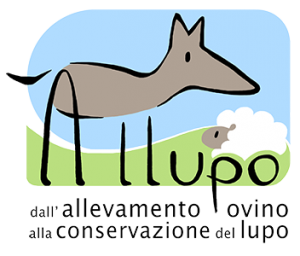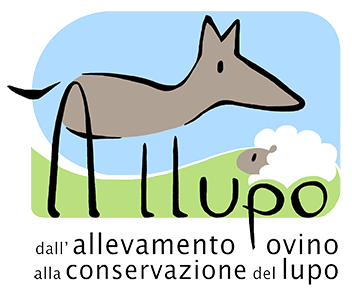JAZZO CORTE CICERO
la lana del lupo

It was a winter day, I do not remember well but maybe we were at a seminar on the wolf held by Giorgio Boscagli or on the boar by his friend Duccio Berzi organized by the Alta Murgia National Park, when I met Annamaria Ponzetti, owner of the sheepfolder together with his brothers Vittoria and Carlo, formerly an agricultural company “Masseria Tre Fratelli Corte Cicero”. Thanks to her perseverance to the great cultural facet and sensibility, she has been able to preserve not only the story of a noble family, Viti De Angelis, which has its roots in the Altamura peasant culture typical of the Murgia territory but of an entire unique environmental context, where the sheep, thick wool blend and mix with the moss and lichen that cover the outcropping limestone rocks, the fragrance of wild herbs and with the shadow of the oaks, of a pear tree or a solitary wild almond tree, full of thorns.
…I “presented” her the idea the project which was then called ALLUPO; not even one night passed and she immediately “introduced” the the sheepfold, Corte Cicero, in all its silence and its voices hidden between those stones that delimit the jazzo and the courts, the house of the shepherds and the “cathedral”. the silvopastoral company “Jazzo Corte Cicero – la lana del lupo” was born, the outpost, with the intent to carry out the project actions, to host the Biological Station, the territorial office of the Research Center for Biodiversity, for the protection of territory, to carry out didactic and research activities on the conservation of agro-pastoral systems, to breed, enhance and protect the indigenous Apulian domestic breeds in danger of extinction.
Corte Cicero, “the court where the chickpeas grow”; “cicero” is the dialect word that indicates a specific plant, the clover, noble essence of pastures with pods rich in chickpeas (ciceri). The jazzo was the right arm, the production space, the sheepfold of the Casino Viti De Angelis placed higher up where since 1600 horses, cattle and sheep were bred. The farm buildings of Corte Cicero are slightly set in one of the blades and valleys that characterize the complex topographic system of Parco La Mena, area located in the countryside of Altamura rich in pastures, shrubby pastures with centuries-old species of wild almond Prunus webbii, ancestor of all the varieties currently cultivated, and thick oak woods Quercus pubescent. The area, besides having great naturalistic value, sinks its deepest being between the social and economic history of yesterday and that of today. Yesterday was the stage of all that economy that enriched the South, the sheep breeding. The Mena, the Mena of the sheep, the Customs, when transhumance took place, the arrival of the herds on the Murgia in autumn was registered at the Mena and the owners paid a quota for grazing. At La Mena Park the sheep were “bitten” … Today many pastures have been replaced by arable land and pastoral activity has been reduced to a few “sedentary” companies, only the Schiavarelli brothers carry out a sort of local transhumance using the highest areas during the summer. In the area, the breeding of the “altamurana” sheep (an endangered local breed) are very important, a “mission” carried out by the company of Antonello Viti De Angelis and by Jazzo Corte Cicero. The Masseria, the jazzo and its woods were the places of thought, refuge and struggle, here passed the Briganti General, Carmine Crocco di Rionero in Vulture, with his peasants.
Today the silvopastoral company “Jazzo Corte Cicero”, once an integral part of the property Viti De Angelis, manages about 200 hectares of pastures, shrub pastures and trees, and cove oak woods. Pastoral and grazing activities were not made at least since the mid-1980s. The lands and structures in the last phase were used for the breeding and grazing of podolic cows that “arrived” from Basilicata in winter and remained until in the middle of June. Thanks to the Allupo project, the company contributes to the valorization of indigenous domestic breeds, the diffusion of peasant culture and sustainable management, the preservation of art and the transhumance lifestyle, the promotion of research for the conservation of the wolf and the biodiversity of agro-pastoral systems.
The company is keeper of the Altamurana sheep: a dozen Garganiche goats, Murgese horses and podolic cattle among calves, heifers and suckler cows.
Always following the track of the commitment taken in the context of the “ALLUPO” project to involve the shepherds, the breeders, the themes of habitat conservation and biodiversity with particular attention to winning the bet “to live with the wolf is possible”, the silvo-pastoral company Jazzo Corte Cicero has made a pact, an alliance, a collaboration with the company of Federico Varallo of Alfedena (Aquila, Abruzzo) breeder of cattle bovine that practices the art of transhumant. Federico in the summer, during the montication, “grazes” the areas close to the perimeter of the National Park of Abruzzo, Lazio and Molise, in particular it uses the pastures of the mount Amaro that overlooks the towns of Villetta Barrea, Barrea and Civitella Alfedena. His father Rolando has traveled for over 30 years the old and large grassy tracts that connected the pastures of Puglia to the lands of Abruzzo; in particular, the cows of the Varallo family grazed during the winter-spring period in the Bosco Incoronata area of Foggia and crossed the Candela-Pescasseroli cattle track to reach the protected territories of the then Abruzzo National Park in the summer, today Abruzzo, Lazio and Molise.
Jazzo Corte Cicero, starting from this fall season, shares the facilities and services, as well as part of the pastures, with the Varallo company in order to resume and enhance the transhumance on the murge, spread the common thought of conservation of natural resources. This “pact” of friendship-production-conservation wants to keep alive that ancient and subtle historical, cultural and socio-economic bond between Abruzzo and Puglia, between the National Park of Abruzzo, Lazio and Molise, territory where the battle on the conservation of the wolf started ,where the bet was won, where the shepherds have learned to live with the wolves, and the Alta Murgia National Park is the scene of new events, old territories reoccupied and taken over by the wolf. What has happened in the National Park of Abruzzo and today in the Alta Murgia National Park, as well as in other Italian territorial realities, is an environmental-conservation history with its happy ending that cannot end or stop here. Conservation is made of concrete and dynamic actions that must be perpetrated as long as possible. The collaboration between the two companies aims to keep alive the memory of a long and hard path, of a journey that has seen and that sees the wolves running free and howling at night.
The companies Jazzo Corte Cicero and Varallo support, spread the conservation of the wolf and its ecological value; through the production and sale of cheese “caciocavallo podolic of wolves” they intend to promote and give a contribute to the research and monitoring of the wolf and of the bird indicators of the quality of the agro-pastoral systems.
Here the “Jazzo Corte Cicero – la lana del lupo” hosts a community of shepherds as well as a scientific one. Here we study the ecology of grazing, the interactions between different land use, vegetation structure and animal communities at different trophic levels. Here is the laboratory for the students of Biological and Natural Sciences of the University of Bari who attend courses in Zoology, Applied Zoology, Conservation and Management of Agro-Pastoral Systems. Here we organize study days for students of all levels, small and large, on environmental issues that see breeding and conservation of biodiversity interact. Here is the School of the Shepherd. Here, travelers, travelers and timeless people are welcomed.
Up to date “Jazzo Corte Cicero – la lana del lupo” and the Biological Station have hosted more than twenty travelers from all over the world (France, United States, Russia, Czech Republic, Holland, England, etc.) belonging to the Workaway circuit. Here they learned the pastoral practices, the principles of conservation and shared an idea.
We may request cookies to be set on your device. We use cookies to let us know when you visit our websites, how you interact with us, to enrich your user experience, and to customize your relationship with our website.
Click on the different category headings to find out more. You can also change some of your preferences. Note that blocking some types of cookies may impact your experience on our websites and the services we are able to offer.
These cookies are strictly necessary to provide you with services available through our website and to use some of its features.
Because these cookies are strictly necessary to deliver the website, you cannot refuse them without impacting how our site functions. You can block or delete them by changing your browser settings and force blocking all cookies on this website.
These cookies collect information that is used either in aggregate form to help us understand how our website is being used or how effective our marketing campaigns are, or to help us customize our website and application for you in order to enhance your experience.
If you do not want that we track your visist to our site you can disable tracking in your browser here:
We also use different external services like Google Webfonts, Google Maps and external Video providers. Since these providers may collect personal data like your IP address we allow you to block them here. Please be aware that this might heavily reduce the functionality and appearance of our site. Changes will take effect once you reload the page.
Google Webfont Settings:
Google Map Settings:
Vimeo and Youtube video embeds:
You can read about our cookies and privacy settings in detail on our Privacy Policy Page.
Privacy Policy
